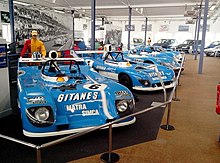
The Matra MS680 (sometimes referred to as Matra-Simca MS680) is a sports prototype racing car made by the French manufacturer Matra, which raced in the 1974 World Sports Prototype Championship and the 1974 24 Hours of Le Mans. [1]

The Matra MS680 (sometimes referred to as Matra-Simca MS680) is a sports prototype racing car made by the French manufacturer Matra, which raced in the 1974 World Sports Prototype Championship and the 1974 24 Hours of Le Mans. [1]

The MS680 was the last sports car developed by Matra. The only MS680 made was based on a modified chassis of the MS670C. Powering the car was the 3.0 L (180 cu in) Matra Sports V12 engine.
The MS680 was used in the first pre-race tests and in the race at the 1974 24 Hours of Le Mans. The car was driven by Jean-Pierre Beltoise and Jean-Pierre Jarier. During the race Matra suffered from engine overheating problems, causing the car to break down after 104 laps of the race. [2]
Matra retired from international motor racing in late 1974 and the car was no longer used. The only example of MS680 is kept inside the Matra Museum in Romorantin-Lanthenay.

Henri Jacques William Pescarolo is a former racing driver from France. He competed in the 24 Hours of Le Mans a record 33 times, winning on four occasions, and won a number of other major sports car events including the 24 Hours of Daytona. He also participated in 64 Formula One World Championship Grands Prix, achieving one podium and 12 championship points. Pescarolo also drove in the Dakar Rally in the 1990s, before retiring from racing at the age of 57. In 2000 he set up his eponymous racing team, Pescarolo Sport, which competed in Le Mans until 2013. He wore a distinctive green helmet, and wears a full-face beard that partially covers burns suffered in a crash.

Jean-Pierre Alain Jabouille was a French racing driver. He raced in 55 Formula One Grands Prix, collecting two wins during the first years of Renault's turbocharged programme in the late 1970s and early 1980s. Jabouille also raced the 24 Hours of Le Mans from the late 1960s to the early 1990s, driving for Alpine, Matra, Sauber, and Peugeot and collecting four 3rd overall finishes in 1973, 1974, 1992, and 1993. Jabouille was one of the last of a breed of Formula One drivers who were also engineers.
The Ferrari P was a series of Italian sports prototype racing cars produced by Ferrari during the 1960s and early 1970s.

The Mirage Lightweight Racing Car was a family of race cars built by J.W. Automotive Engineereing (JWAE) at Slough in England, initially to compete in international sports car races in the colours of the Gulf Oil Corporation.
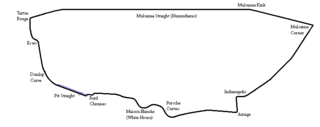
The 1974 24 Hours of Le Mans was the 42nd Grand Prix of Endurance, and took place on 15 and 16 June 1974. It was the fifth round of the 1974 World Championship for Makes. After Alfa Romeo had won the first race of the season at Monza, it had been Matra all the way and they came to Le Mans as firm favourites for a third consecutive outright victory, especially after Alfa Romeo withdrew its cars just before raceweek.

The 1973 24 Hours of Le Mans was the 41st Grand Prix of Endurance and took place on 9 and 10 June 1973. It was the eighth round of the 1973 World Championship of Makes.

The 1972 24 Hours of Le Mans was a motor race staged at the Circuit de la Sarthe, Le Mans, France on 10 and 11 June 1972. It was the 40th running of the 24 Hours of Le Mans and the ninth race of the 1972 World Championship for Makes.
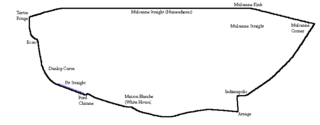
The 1971 24 Hours of Le Mans was the 39th Grand Prix of Endurance, and took place on 12 and 13 June 1971. It was the ninth round of the 1971 International Championship for Makes.

The 1970 24 Hours of Le Mans was the 38th Grand Prix of Endurance and took place on 13 and 14 June 1970. It was the 8th stage of the 1970 World Sportscar Championship season.

The 1969 24 Hours of Le Mans was a motor race staged at the Circuit de la Sarthe, Le Mans, France on 14 and 15 June 1969. It was the 37th Grand Prix of Endurance and was the eighth round of the 1969 International Championship for Makes. The race was open to Group 6 Prototype Sports Cars, Group 4 Sports Cars and Group 3 Grand Touring Cars.
The 1968 24 Hours of Le Mans was the 36th Grand Prix of Endurance, and took place on 28 and 29 September 1968 on the Circuit de la Sarthe, in Le Mans, France.

The Ferrari 312 PB was a Group 6 Prototype-Sports Car introduced in 1971 by Italian carmaker Ferrari. It was officially designated the 312 P, but often known as the 312 PB to avoid confusion with a previous car of the same name. It was part of the Ferrari P series of Prototype-Sports Cars but was redesignated as a Group 5 Sports Car for 1972.
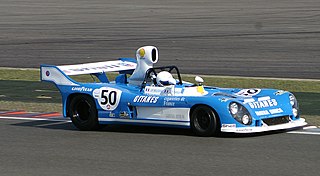
The Matra-Simca MS670 was a Group 5 prototype race car introduced in 1972 for the World Championship for Makes. The MS670 replaced the previous Matra-Simca MS660C.
The Matra MS620 was a Group 6 sports prototype built by Matra in 1966, and was the second such car built by the company. Fitted with a 1.9 litre version of the BRM Formula One V8 engine, four cars were built, but were mostly used as developmental cars. In 1967, the MS620 was replaced by the 3 litre Matra MS630, although it was used in the Le Mans Test of that year, fitted with a 4.7 litre Ford V8 engine.

The Matra Company's racing team, under the names of Matra Sports, Equipe Matra Elf and Equipe Matra Sports, was formed in 1965 and based at Champagne-sur-Seine (1965–1967), Romorantin-Lanthenay (1967–1969) and Vélizy-Villacoublay (1969–1979). In 1979 the team was taken over by Peugeot and renamed as Automobiles Talbot.

The Ligier JS2 is a mid-engined sports coupé that was built by Ligier in the French commune of Abrest near Vichy in the department of Allier between 1971 and 1975. Road-going and competition versions were built.

The Matra-Simca MS630 was a Group 5 prototype race car introduced in 1967 for the World Championship for Makes. The MS630 replaced the previous Matra MS620. The car was initially designated as the Matra M630, but when Simca sponsored Matra in 1969, it was renamed as the Matra-Simca MS630.
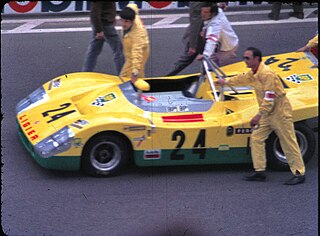
The Ligier JS3 is a sports-racing car built by Automobiles Ligier. It was unveiled in 1971 and ended its competition life the same year. Only one JS3, chassis JS3-01, was ever built.
Gonzague Olivier, referred to in some sources as Gustave Olivier, was a French racing driver and boat builder. Most of his success came at the wheel of Porsche 356 and Porsche 550 racing cars in the 1950s.
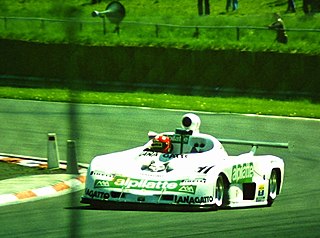
The Osella PA8 was a 2-liter, Group 6, sports car prototype, developed by Osella Squadra Corse in 1980, and used in sports car and Hillclimb races until 1988. It is powered by the naturally aspirated, 300 hp (220 kW), 2.0 L (120 cu in) BMW M12/7 engine, drives the rear wheels via a 5-speed Hewland LGA manual transmission.